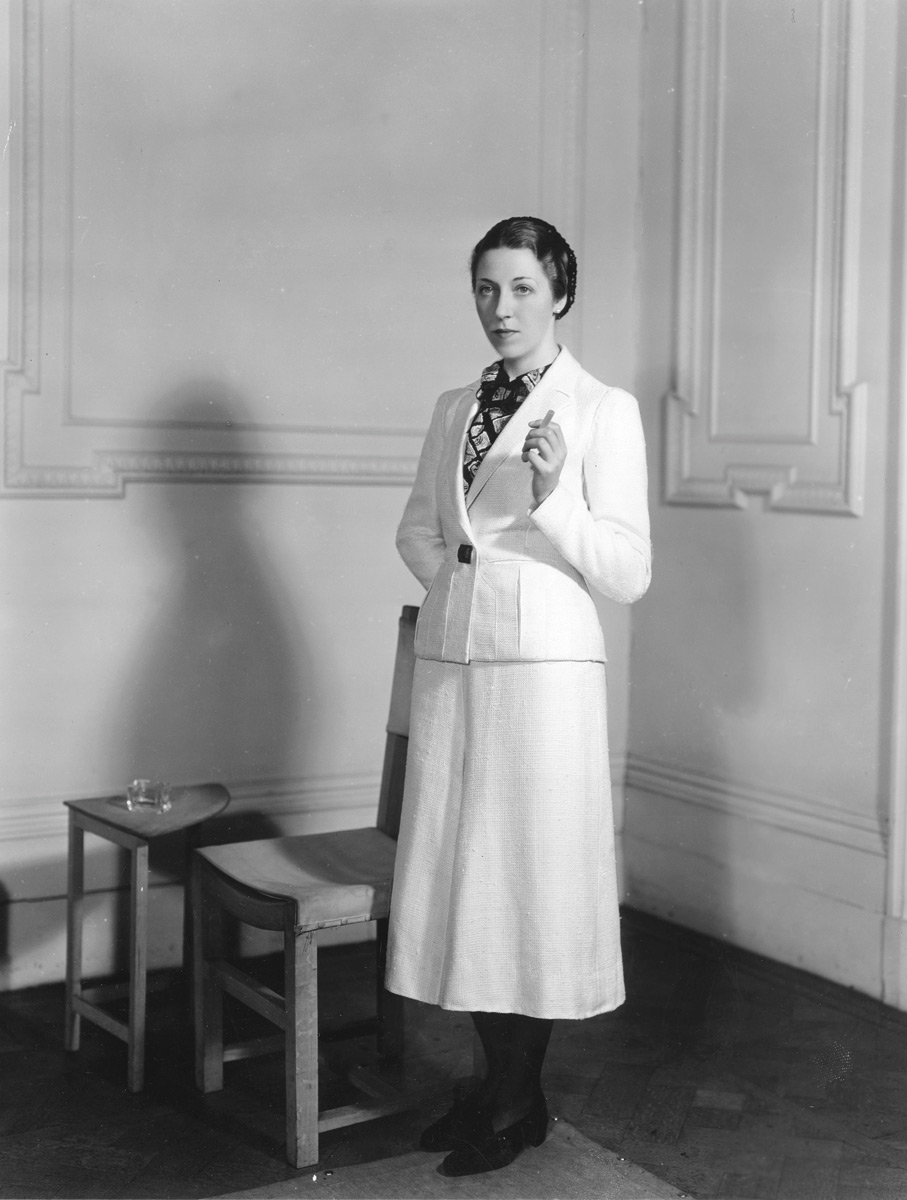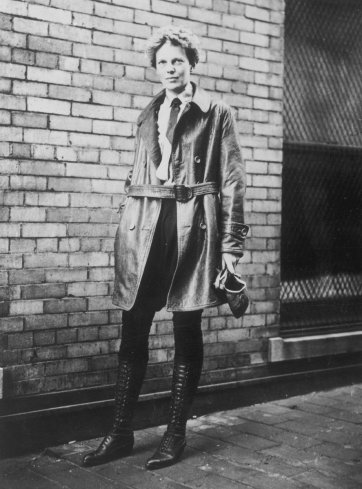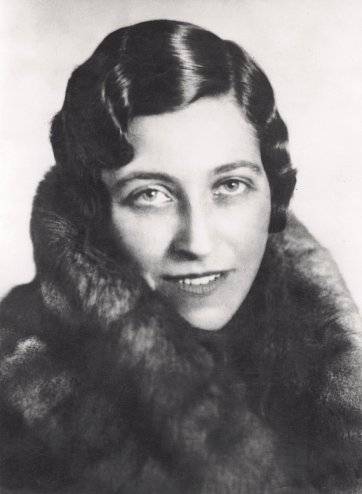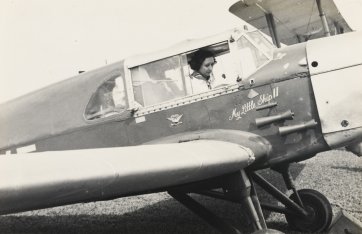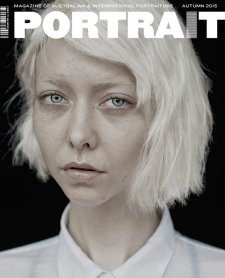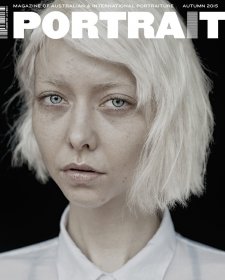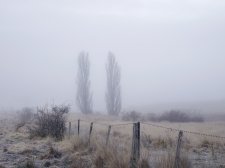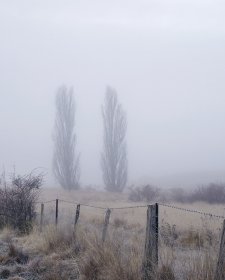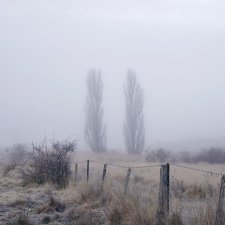Even today portraits of the aviatrix convey a powerful sense of allure and exhilaration. Throwing caution to the wind with their daring adventures, the exploits of the aviatrix captivated the world and the zeitgeist of an era of progress when women began to radically challenge conventional gender roles. Although the first powered aircraft had been invented in 1903 by the Wright Brothers it was in the 1920s and 1930s that aviation made its most significant developments. Aircraft became more technologically sophisticated, able to fly longer distances and capable of taking passengers to see the world. It was also a period in which record breaking flights were being attempted. In 1927 Charles Lindbergh made his solo transatlantic flight, and the following year Charles Kingsford Smith’s transpacific flight made international headlines. Plane travel quickly became associated with adventure and glamour and their pilots became the celebrities of the day.
Women flew solo as early as 1909 but public attitudes to female pilots had not changed much since 1910 when Orville Wright stated the commonly held view that ‘women were too nervous to fly’. Decades later women would still contend with condescending remarks. Aviation was tied up with ideas of heroism, speed, risk and adventure, and was considered a fundamentally masculine realm. Male pilots often guarded their practice closely, obstructing women who wanted to learn the necessary skills. However, such sentiments only encouraged the women who proved that they too could become part of aviation history. This was a new era, and women were conquering the domains of men and machines. The aviatrix was breaking aviation records, and proving that flying was certainly not for the faint-hearted. They relied on their mechanical and navigational skills to get themselves out of dangerous situations. Many encountered turbulent conditions, exhaustion and mechanical problems, as well as having to land their planes on rough terrain – some lost their lives.
In 1930 Australian aviatrix Lores Bonney began flying lessons in secret. Eventually her husband purchased her a DH60 Gipsy Moth aircraft, which she called ‘My Little Ship’. Being a leather manufacturer he also had two full-length suede flying suits made for her. When she landed at Croydon airport on 21 June 1933, she became the first women to fly from Australia to England. Extraordinarily, every step of her journey was reported in the Australian press, ‘Mrs Bonney’ becoming a household name. Like the rest of the world, Australia was developing a keen interest in flying. Featured on the cover of the Australian Women’s Weekly magazine, the image of the aviatrix conveyed both a sense of adventure and glamour. Often described as the quintessential modern woman, she reflected a radically changing social landscape. As historian Robert Wohl suggests, ‘flight became a metaphor for the transformation of consciousness, its liberation from the constraints of normal day-to-day existence’. Travelling abroad, un-chaperoned, she was in charge of her destiny, creating her own adventure. And it was these associations around the figure of the aviatrix that were so powerful in helping to shape and redefine, images of women during the 1920s and 30s.
English aviatrix Amy ‘Johnnie’ Johnson, the first women to complete a solo flight from England to Australia in 1930, became a media sensation in Australia. Splashed across the newspapers and magazines of the day, she quickly became a public spectacle, with the press taking every opportunity for photographs wherever she landed. In the many photographs of Johnson waving to the crowds in her glamorous flying outfits, she could be mistaken for a film star. Her appearance itself was a crucial aspect in defining her public persona. References were continually made to Johnson’s hair and clothing during the weeks she spent in Australia. Her short hairstyle, practical yet perfectly slicked, was attractive to young Australian women, and hairdressers had many requests for an, ‘Amy Johnson wave’ or ‘Johnnie shingle’. Johnson’s status as a media sensation was united with her enormous visual appeal.
When Johnson emerged from the cockpit of her plane, she was the picture of glamour, exuding refinement and elegance and her worldly sophistication was enhanced by her association with one of the most significant avant-garde fashion designers of the time. Italian designer Elsa Schiaparelli embraced plane travel as an opportunity to express her modernist aesthetic and had designed a collection for Johnson to wear on her flights making Johnson fashion icon. In the 1930s an article in Harper’s Bazaar described Schiaparelli’s clothes as having, ‘the essence of modern architecture, modern thought and modern movement’, elements perfectly suited to the aviatrix.
A series of photographic portraits taken of Johnson in a modern apartment wearing the collection designed for her by Schiaparelli show just how influential the image of the aviatrix was during the early twentieth century. For all their air of casual relaxation, the portraits are not accidental, but rather carefully crafted and posed images.
Schiaparelli designed a collection of tailored suits with skirts in white, navy and black, and made classic cut shirts in bold artistic prints. For Johnson’s record breaking flight from Croydon to Cape Town South Africa in 1936, she was photographed wearing a Schiaparelli ‘mist-proof blue woolen suit, with a divided skirt’ and a blouse made of signature print fabric that featured newspaper clippings about Schiaparelli’s fashion, collected from England, Sweden, Germany and France. Johnson described the outfit to the press as the combination of ‘smartness with utility’. Significantly, white was encouraged for flight-wear during this period, as it helped to perpetuate the idea of flying as a clean and luxurious form of transport, unlike steam engines.
Much of the public fascination that surrounded the aviatrix was the fact that these women were engaging in new modes of fashion. Experimenting with unexpected modes of dress, the aviatrix took to the skies wearing clothes designed for practicality as well as style. The association between freedom and movement linked her to the Flapper, the new women of the 1920s who had dramatically transformed women’s fashion by removing the corset, raising hem-lines and cutting their long tresses. Considering warmth as well as ease of movement, dresses, stockings and heels would have proved cumbersome in the cramped cockpit of a plane. Modesty was also considered for flight wear. Therefore, the traditional men’s style flying suit was adopted by some aviatrixes. A full-length portrait of Lores Bonney shows her in front of her Little Ship wearing a pair of white overalls. Discarding the high heel, Bonney opted for a pair of two-tone flat brogue shoes, traditionally worn by men as sports wear. She also adds a decorative scarf, which was a fashionable item during this period after being popularised by the automobile drivers of the day, who sped along roads in their open-air cars, scarves flailing behind. Looking at this portrait, ‘Mrs Bonney’ was well removed from the image of the average married women of the day.
The most famous of all aviatrixes was American Amelia Earhart, who gained international celebrity in 1932 when she became the first woman to fly solo across the Atlantic Ocean. She was known for her daring sense of adventure, a characteristic that was often expressed in the many portraits of her during this period. She was routinely portrayed as though she had just stepped out of her plane, wearing her flying outfits and with her cropped, slightly disheveled hairstyle and sun freckled face. Although we now take women wearing pants as normal, aviatrixes who started wearing them during the 1930s created a stir. Earhart’s outfits were not polished refined ensembles like Johnson’s; rather, she would wear a crinkled white shirt with a loose fitting tie, long pants and knee high leather boots. Combined with her willowy frame, she helped to popularise the androgynous style. She often wore her signature brown leather bomber jacket, goggles and flying cap. It all added to the impression of Earhart as a free spirited adventurer. Earhart’s look became iconic, and she was photographed for magazines such as Vogue, and her portrait even placed on a well-known brand of cigarettes. Aware of the popularity her image had created, Earhart debuted her own fashion line in 1934, in which she incorporated aspects of aviation gear into everyday wear, such as propeller shaped buttons, parachute chord or a tie belt. Perhaps more gimmicky than fashionable, the Earhart fashion label did not take off. However, her image itself was later used in major advertising campaigns, and is still referenced today in popular culture.
The women who embraced aviation broke new boundaries. They entered a male dominated practice, and succeeded in pioneering their adventures.
As gender and culture historian Prudence Black has articulated, their images encapsulated what could be achieved in a modern society.
